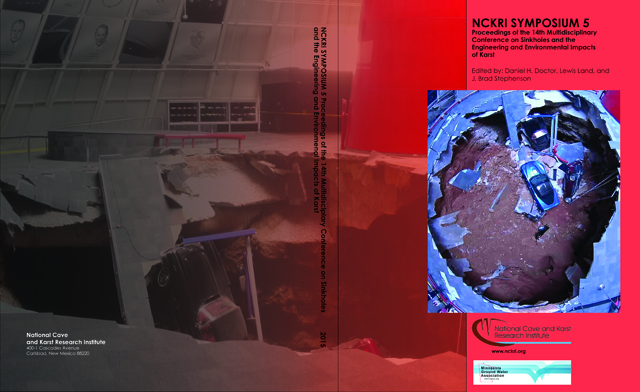Abstract
Cavity collapse and settlement due to the presence of shallow solution cavities cause significant geotechnical and other engineering problems in certain areas within the Abu Dhabi City Municipality (ADM). A cavity probability map helps to identify regions that are more susceptible to the formation of cavities by identifying and analyzing influential factors contributing to its formation. Information relating to cavities was cataloged and reviewed based on available data from the Geotechnical Information Management System (GIMS), which is a consolidated geotechnical database developed by the ADM. Geological and geotechnical subsurface conditions are obtained from previous site investigation campaigns performed in the ADM region. All geotechnical, geological and cavity related information are stored in a GIS geodatabase system. Based on detailed literature review, primary factors influencing formations of cavities are identified: presence of soluble bedrock, depth to Gascharan Formation, cavity density, cavity thickness and distance to nearest neighbor. Another important factor in the formation of cavities is fluctuations in the groundwater table. Fluctuations are mostly caused by dewatering projects during constructions of buildings or infrastructure. The effect of variation in groundwater is not considered in this study due to lack of high quality data. A decision-tree model based on cavity distribution was developed for cavity hazard assessment. The primary controls on cavity development are lithostratigraphic position or bedrock geology and depth to the soluble Gachsaran Formation. Most cavities tend to form in highly concentrated zones. Implementation of the decision-tree model in ArcGIS resulted in a cavity probability map. This cavity probability map is mainly based on existing borehole data. Areas not fully mapped by boreholes must be re-evaluated for cavity risk when new borehole data is available. Low Probability, Low to Moderate Probability, Moderate to High Probability, High Probability, and Very High Probability areas were delineated in the probability map.
Rights Information
DOI
http://dx.doi.org/10.5038/9780991000951.1087
Included in
Development of Cavity Probability Map For Abu Dhabi Municipality
Cavity collapse and settlement due to the presence of shallow solution cavities cause significant geotechnical and other engineering problems in certain areas within the Abu Dhabi City Municipality (ADM). A cavity probability map helps to identify regions that are more susceptible to the formation of cavities by identifying and analyzing influential factors contributing to its formation. Information relating to cavities was cataloged and reviewed based on available data from the Geotechnical Information Management System (GIMS), which is a consolidated geotechnical database developed by the ADM. Geological and geotechnical subsurface conditions are obtained from previous site investigation campaigns performed in the ADM region. All geotechnical, geological and cavity related information are stored in a GIS geodatabase system. Based on detailed literature review, primary factors influencing formations of cavities are identified: presence of soluble bedrock, depth to Gascharan Formation, cavity density, cavity thickness and distance to nearest neighbor. Another important factor in the formation of cavities is fluctuations in the groundwater table. Fluctuations are mostly caused by dewatering projects during constructions of buildings or infrastructure. The effect of variation in groundwater is not considered in this study due to lack of high quality data. A decision-tree model based on cavity distribution was developed for cavity hazard assessment. The primary controls on cavity development are lithostratigraphic position or bedrock geology and depth to the soluble Gachsaran Formation. Most cavities tend to form in highly concentrated zones. Implementation of the decision-tree model in ArcGIS resulted in a cavity probability map. This cavity probability map is mainly based on existing borehole data. Areas not fully mapped by boreholes must be re-evaluated for cavity risk when new borehole data is available. Low Probability, Low to Moderate Probability, Moderate to High Probability, High Probability, and Very High Probability areas were delineated in the probability map.

